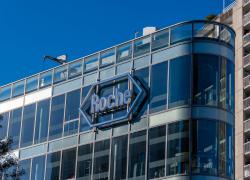
Enliven seeks its reverse merger payday
Early data with ELVN-001 hold up well against olverembatinib and TERN-701.
Early data with ELVN-001 hold up well against olverembatinib and TERN-701.

Since Enliven Therapeutics gained a Nasdaq listing through its reversal into the shell of Imara in October 2022 its investment case has increasingly been tied to the BCR-ABL inhibitor ELVN-001, and the latest update to this project's phase 1 trial has continued to back its promise.
That promise is as a follow-on to Novartis's third-generation chronic myelogenous leukaemia (CML) drug Scemblix, an increasingly complex space where two competitors, Ascentage's olverembatinib and Terns Pharmaceuticals' TERN-701, are casting something of a shadow.
Such considerations are relevant given Enliven's market cap of nearly $1bn; this now hinges almost entirely on ELVN-001, which is due a full phase 1 update at June's European Hematology Association conference. The only other project Enliven had in its pipeline was the small-molecule HER2 inhibitor ELVN-002, but that's just been discontinued.
44% MMR rate
On Wednesday an EHA abstract claimed a 24-week major molecular response (MMR) rate of 44% among 36 late-line CML patients, signifying no significant diminution of activity versus the previous data cut, which comprised 18 fewer patients, and above the 25% cited on Scemblix's label. Nevertheless, Enliven stock fell 7%, albeit on a turbulent day for the broader biotech market.
CML was revolutionised by BCR-ABL inhibitors, the first of which was Gleevec, whose launch was followed by those of Sprycel, Tasigna, Bosulif and Iclusig. Scemblix burst on to the scene as a drug capable of overcoming resistance mechanisms to early-generation drugs, and last year scored a first-line approval to boot.
As such a focus for Enliven isn't just ELVN-001's activity in late-line CML, but specifically in patients who fail on Scemblix. If Scemblix becomes a front-line standard, the logic goes, then any molecule that can overcome resistance to it could accordingly move forward in the treatment hierarchy.
A key feature of ELVN-001's phase 1 trial is that 57% of the patients enrolled so far have failed on Scemblix. At present the 24-week MMR rate among those previously treated with Scemblix or Iclusig is a respectable 36% – but the abstract doesn't split out the rate in Scemblix failures specifically.
Selected late-generation BCR-ABL inhibitor
| Project | Company | Status | Note |
|---|---|---|---|
| Olverembatinib | Ascentage (Takeda option) | Ph3 Polaris-2 in 3rd-line CML | Approved 3L in China, based on ph2 trial with 0% prior Scemblix |
| ELVN-001 | Enliven | Ph1 Enable in r/r CML | 57% prior Scemblix |
| TERN-701 | Terns | Ph1 Cardinal in r/r CML | 40% prior Scemblix |
| Vamotinib | Fusion Pharma | Ph1/2 in post-2nd-gen TKI CML | 0% prior Scemblix; status unclear |
| Vodobatinib | Sun Pharma | Ph1/2 in 4th-line CML | ASH 2022 data: 53% MRR in 15 post-Iclusig or Scemblix pts; 0% MRR in 3 post-Scemblix pts |
| TGRX-678 | Shenzhen TargetRx | Ph1 in post-2nd-gen TKI CML | 0% prior Scemblix |
Source: OncologyPipeline.
What about competitors? Ascentage's olverembatinib is in focus since Takeda last year paid $100m for an option over its future development. Olverembatinib is approved in China for third-line CML on the basis of a phase 2 study that didn't include any Scemblix failures, and its ex-China future rests on the recently begun phase 3 Polaris-2 trial.
However, olverembatinib is structurally very similar to Takeda's Iclusig, a drug beset with problems. Iclusig has been limited to a third-line label, with earlier-line trials terminated, stymied in part by a profile that includes liver toxicity and cardiovascular events including heart failure in a boxed warning on its label.
The fear is that this molecule's structural similarity to olverembatinib implies a similar lack of tolerability for the latter. In this context the profile of ELVN-001 is relevant: the EHA abstract reveals no cardiovascular toxicity, though two patients discontinued owing to cytopenias and one because of grade 2 pancreatitis.
As for Terns, that company's TERN-701 is also in phase 1, but its use of slightly different response metrics complicates comparisons. Among eight patients there was just one MMR, and that subject hadn't received prior Scemblix, though Terns claims a "cumulative MMR rate" of 50% among 10 patients – and no clinically meaningful changes in liver function or cardiovascular markers.
Terns carries a market cap of barely a quarter of Enliven's, and it has several non-oncology pipeline projects beyond TERN-701. It is also due to present at EHA, but its abstract details only preclinical TERN-701 data.
This story has been updated.
1418













